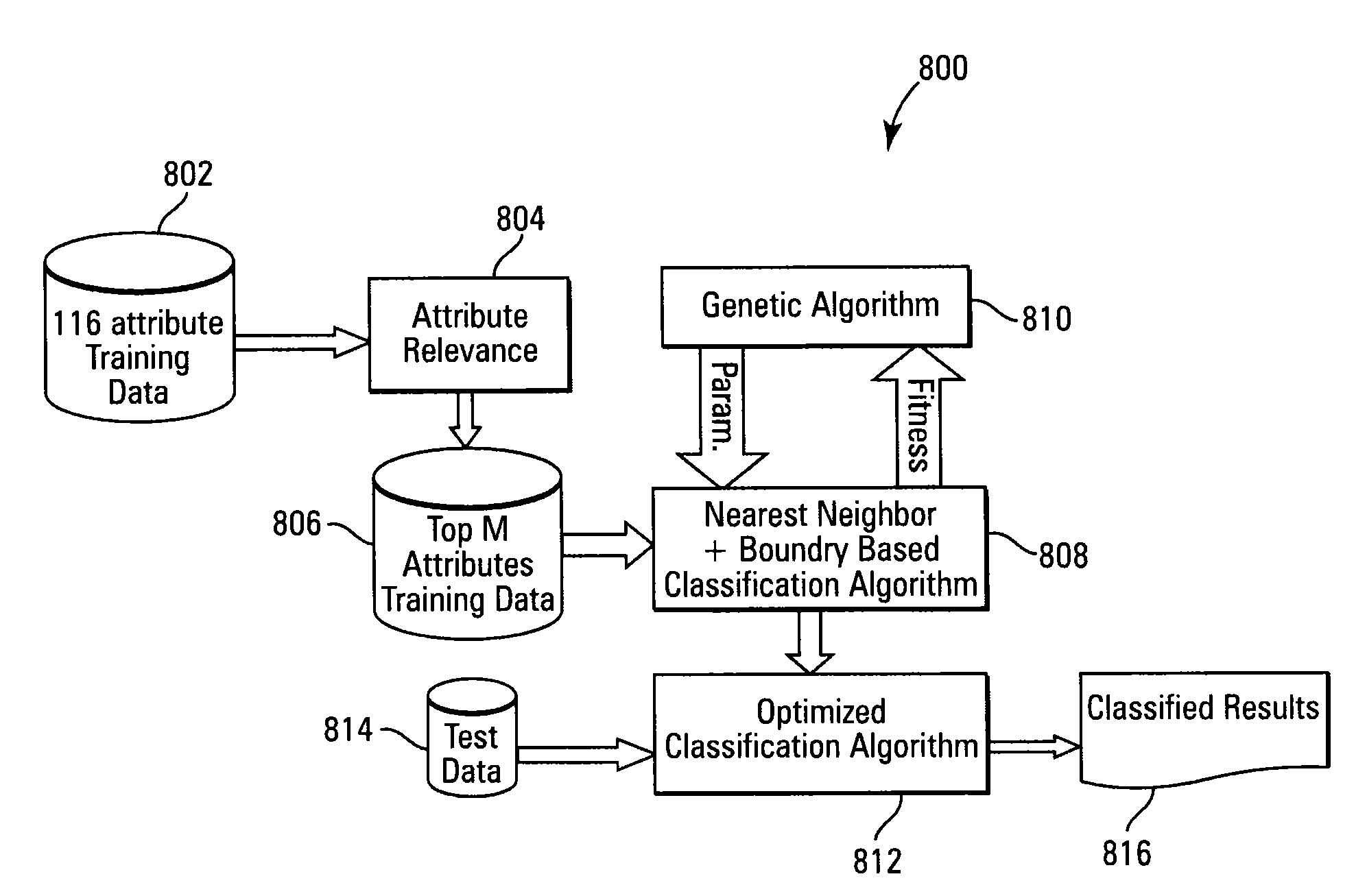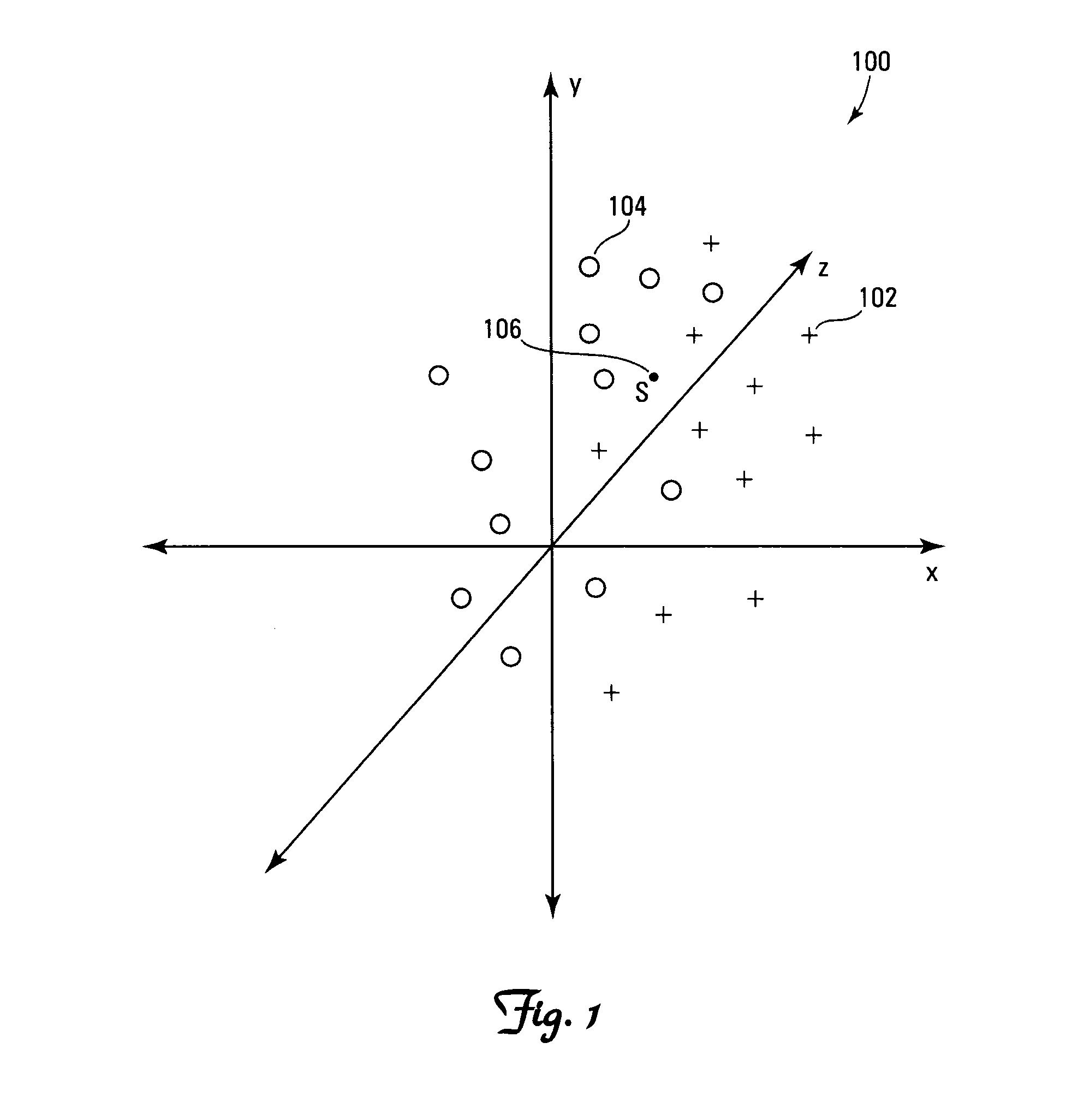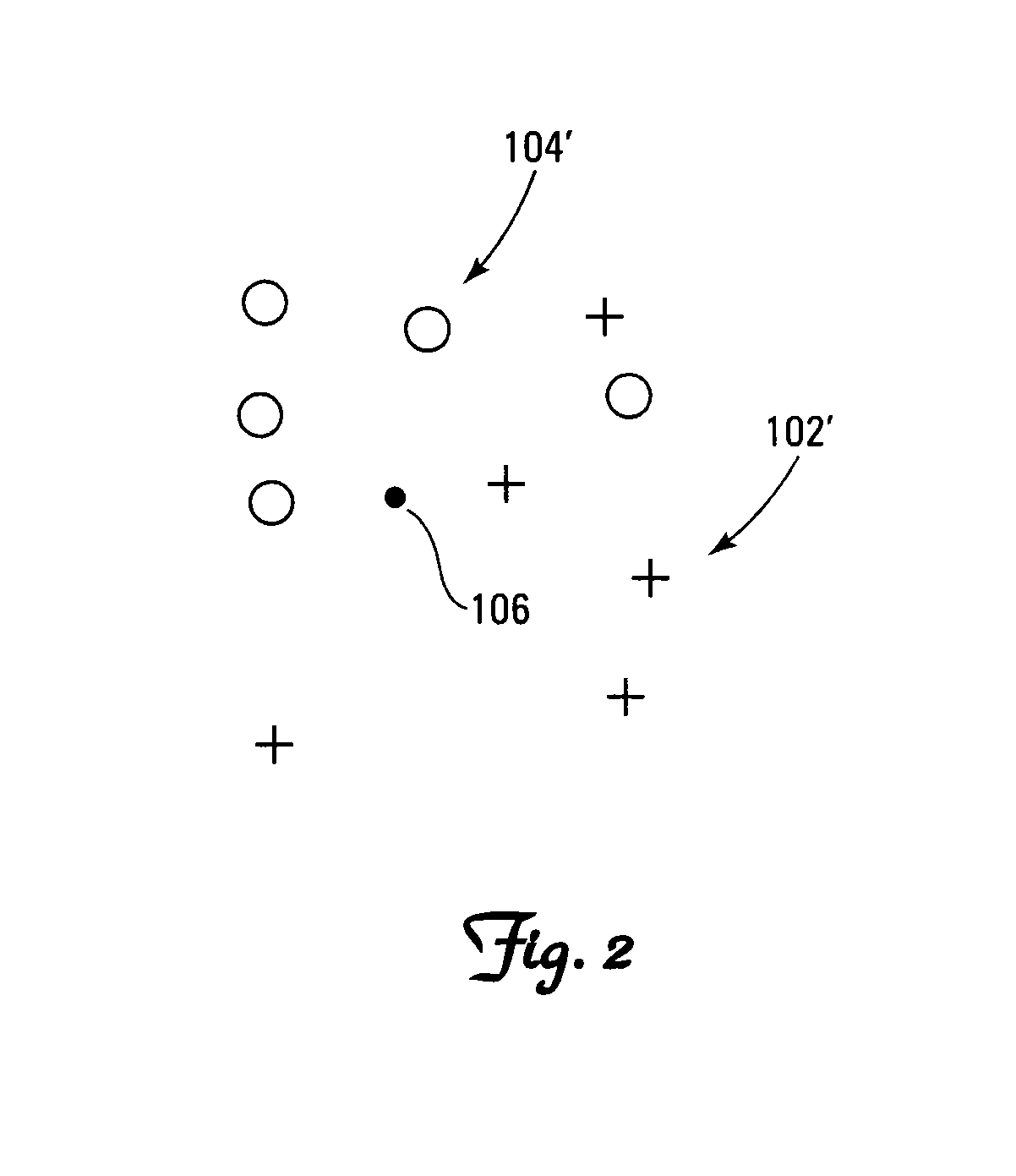Parameter optimized nearest neighbor vote and boundary based classification
a nearest neighbor and parameter optimization technology, applied in the field of computer-assisted data analysis, can solve the problems of large typical cad training data sets, extreme unbalance between positive and negative classes of data items, introduction of irrelevant and redundant features, and noisy labeling
- Summary
- Abstract
- Description
- Claims
- Application Information
AI Technical Summary
Benefits of technology
Problems solved by technology
Method used
Image
Examples
Embodiment Construction
[0024]According to one aspect of the invention, two variant forms of the above approaches are combined and optimized using an evolutionary algorithm to achieve great classification accuracy. An efficient vertical data structure (Predicate Tree or P-tree) and a novel nearest neighbor identification approach are used in conjunction with an evolutionary algorithm to arrive at the optimized parameters efficiently.
[0025]The approach according to one embodiment involves dealing with multiple unknown parameters, such as classification algorithm parameters, as well as attribute relevance parameters. Because of the inability to conduct exhaustive search to find the best possible combination, a Genetic Algorithm (GA) heuristic search is employed. Each iteration of the genetic algorithm requires the evaluation of the proposed classification algorithm with a suggested set of adaptive parameters. Even for small data sets, this results in a large number of training database scans to arrive at an ...
PUM
 Login to View More
Login to View More Abstract
Description
Claims
Application Information
 Login to View More
Login to View More - R&D
- Intellectual Property
- Life Sciences
- Materials
- Tech Scout
- Unparalleled Data Quality
- Higher Quality Content
- 60% Fewer Hallucinations
Browse by: Latest US Patents, China's latest patents, Technical Efficacy Thesaurus, Application Domain, Technology Topic, Popular Technical Reports.
© 2025 PatSnap. All rights reserved.Legal|Privacy policy|Modern Slavery Act Transparency Statement|Sitemap|About US| Contact US: help@patsnap.com



